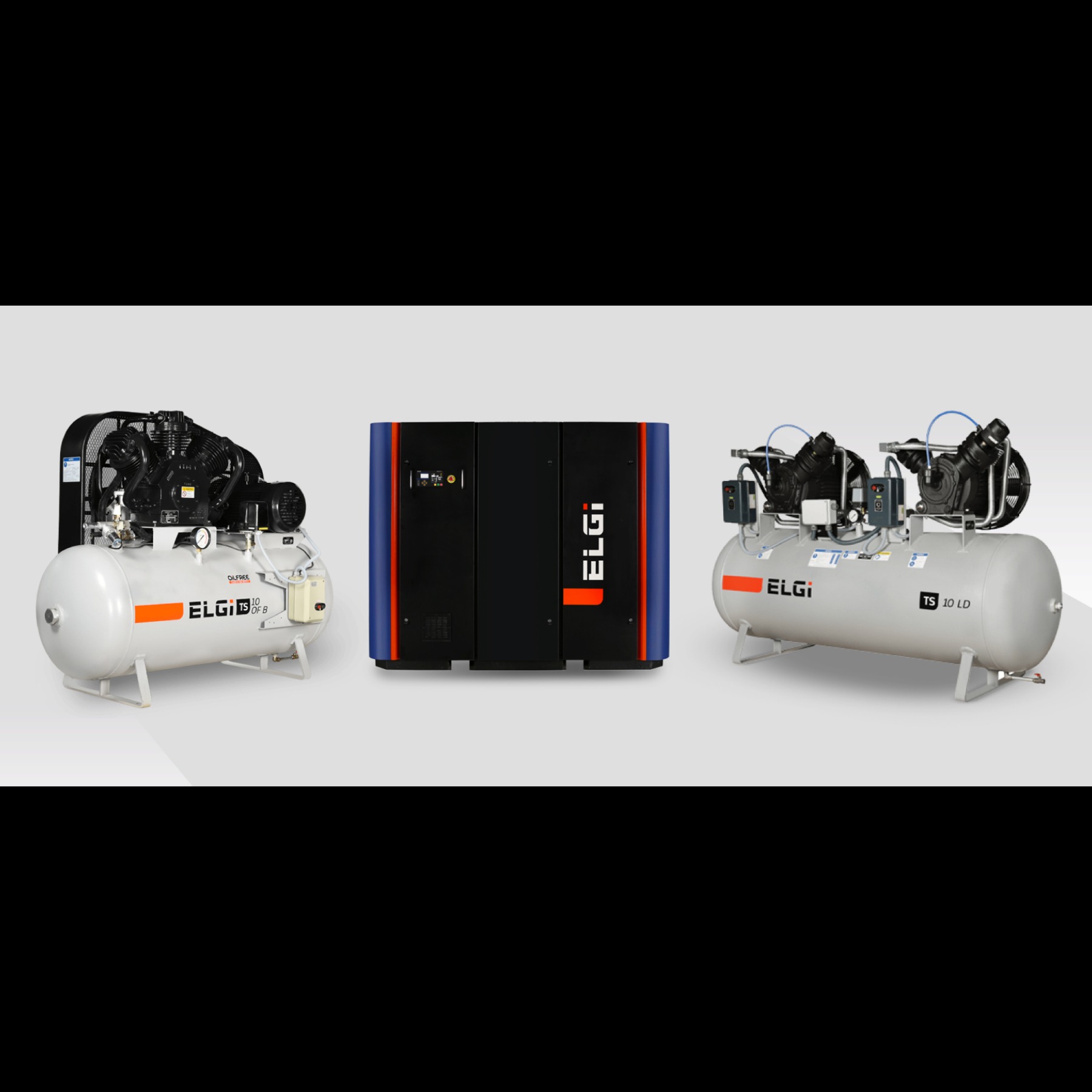The key difference between Rotary Screw Air Compressors and Reciprocating Air Compressors is the mechanism in which they compress air. Their distinct features can be understood in terms of: 1) System design Rotary screw air compressors have a couple of meshing spiral screws called rotors for compressing the input air. While reciprocating air compressors employ pistons moved by a crankshaft for compressing the air. 2) Components involved With just two moving parts (screws) that have a small gap between them, screw air compressors are not subject to much wear and tear. Even in models where the two screws come in contact with each other, they don’t encounter any friction, which is why they are less likely to break down. On the other hand, reciprocating air compressors have several moving parts like pistons, piston rings, connecting rods, and inlet-outlet valves due to which they are noisier and may need stocking of spares. 3) Temperature The internal heat produced by screw air compressors during operation is between 80 - 99 degrees celsius. The heat production is limited, as there is no friction between the screws. The oil or lubricant used between the rotors and casing creates a non-wearing seal that can eliminate the heat with the help of a thermostatically managed fluid circuit. In reciprocating air compressors, the pistons operate at temperatures between 150-200 degrees celsius. The high temperatures are due to the friction caused by the movement of piston rings against the cylinder walls. 4) Filtration of oil The likelihood of discovering leftover oil in an oil-lubricated screw air compressor is minimal, as this device features a three-stage oil filtration system. The oil concentration is generally under three particles per million (PPM). Nonetheless, a reciprocating air compressor lacks an oil filtration system, making its outlet air potentially more contaminated compared to a screw air compressor. The oil concentration in the air rises as piston rings and oil rings wear out, permitting oil to travel to the compression side. Individual benefits of both the models - The top advantages of choosing a screw air compressor are: 1) Continuous air supply 2) Higher duty cycle 3) Better durability 4) Higher overall efficiency 5) Lower ambient noise 6) Higher airflow per rated power Few reasons why some operators still prefer a reciprocating air compressor are: 1) Very high pressure requirements 2) Spare parts management 3) Lower duty cycle
Chat with us on WhatsApp
×
This is your website preview.
Currently it only shows your basic business info. Start adding relevant business details such as description, images and products or services to gain your customers attention by using Boost 360 android app / iOS App / web portal.

2025-01-31T06:07:02
The key difference between Rotary Screw Air Compressors and Reciprocating Air Compressors is the mechanism in which they compress air. Their distinct features can be understood in terms of: 1) System design Rotary screw air compressors have a couple of meshing spiral screws called rotors for compressing the input air. While reciprocating air compressors employ pistons moved by a crankshaft for compressing the air. 2) Components involved With just two moving parts (screws) that have a small gap between them, screw air compressors are not subject to much wear and tear. Even in models where the two screws come in contact with each other, they don’t encounter any friction, which is why they are less likely to break down. On the other hand, reciprocating air compressors have several moving parts like pistons, piston rings, connecting rods, and inlet-outlet valves due to which they are noisier and may need stocking of spares. 3) Temperature The internal heat produced by screw air compressors during operation is between 80 - 99 degrees celsius. The heat production is limited, as there is no friction between the screws. The oil or lubricant used between the rotors and casing creates a non-wearing seal that can eliminate the heat with the help of a thermostatically managed fluid circuit. In reciprocating air compressors, the pistons operate at temperatures between 150-200 degrees celsius. The high temperatures are due to the friction caused by the movement of piston rings against the cylinder walls. 4) Filtration of oil The likelihood of discovering leftover oil in an oil-lubricated screw air compressor is minimal, as this device features a three-stage oil filtration system. The oil concentration is generally under three particles per million (PPM). Nonetheless, a reciprocating air compressor lacks an oil filtration system, making its outlet air potentially more contaminated compared to a screw air compressor. The oil concentration in the air rises as piston rings and oil rings wear out, permitting oil to travel to the compression side. Individual benefits of both the models - The top advantages of choosing a screw air compressor are: 1) Continuous air supply 2) Higher duty cycle 3) Better durability 4) Higher overall efficiency 5) Lower ambient noise 6) Higher airflow per rated power Few reasons why some operators still prefer a reciprocating air compressor are: 1) Very high pressure requirements 2) Spare parts management 3) Lower duty cycle
2025-01-31T06:07:02
Keywords
- friction caused
- high temperatures
- rated power
- durability 4 higher
- top advantages
- permitting oil
- contaminated compared
- oil concentration
- device features
- 150200 degrees celsius
- pistons operate
- nonwearing seal
- casing creates
- heat production
- spares 3 temperature
- dont encounter
- small gap
- distinct features
- key difference
- piston rings
- air rises
- input air
- compress air
- moving parts
- oil rings wear
- moving parts screws
- discovering leftover oil
- internal heat produced
- inletoutlet valves due
- reciprocating air compressor
- screw air compressor
- outlet air potentially
- screw air compressors
- reciprocating air compressors
- million ppm nonetheless

Submit Your Enquiry